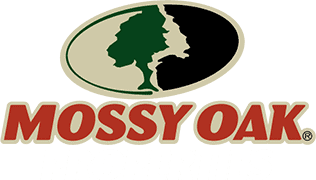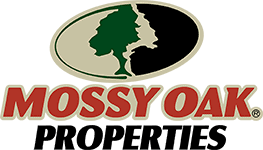Regions
Indiana is divided into three major land regions: The Great Lakes Plain (northern third), the Tipton Till Plain (central third), and the Southern Hills and Lowlands (southern third).
Agriculture in Indiana
An 11.1 billion-dollar industry, agriculture continues to be Indiana’s top revenue generator. There are approximately 56,649 farms in the state, covering 14.9 million acres of Indiana. The average size farm comprises 264 acres. Agriculture makes a significant contribution to all 92 counties, as more than 80% of the land is dedicated to farms and forests.
Indiana’s most valuable crops are corn and soybeans, generating approximately $6.4 billion in combined sales. Fun Fact: Indiana produces about 20% of the nation’s popcorn supply. The state also grows substantial quantities of wheat, hay, and tomatoes. Most of the cropland is found in the northwest area of the state.
Pork, poultry/eggs, and dairy make up the largest livestock products in Indiana. With over 3,000 family pork farmers, meat production generates approximately $1.62 billion in sales. Poultry and eggs create about $1.18 billion in sales. Dairy produces about $750 million in sales.
The Hardwoods industry is another very important commodity in Indiana, contributing more than $10.4 billion to the state’s economy. Indiana continues to be a leader in conservation and sustainability efforts, ensuring forests continue to thrive for years to come.
Fish grown in Indiana include trout, baitfish, ornamental fish, game fish, crustaceans, and mollusks, and contribute about $6.2 million in sales.
Indiana is also experiencing an increase in award-winning wineries.
Wildlife
Indiana’s varied topography lends itself to a wide variety of abundant wildlife. The dense forests are home to black bears, coyotes, bobcats, and cottontail rabbits, while the grasslands are an ideal environment for bison and white-tail deer.
Northern pike, striped bass, catfish, muskie, gar, and walleye are just a few of the species found in Indiana’s rivers and streams.
Major Rivers & Lakes
Indiana rivers include the Big Blue River, Blue River, East Fork White River, Eel River, Flatrock River, Kankakee River, Maumee River, Mississinewa River, Ohio River, Patoka River, Salamonie River, St. Joseph River, Sugar Creek, Tippecanoe River, Wabash River, Walnut Creek, White River, and Whitewater River.
Lake Michigan, the largest lake in Indiana, is located on the northwest border with a surface area of approximately 14.3 million acres (22,406 square miles). Other significant lakes include Brookville Lake, Mississinewa Lake, Monroe Lake, and Patoka Lake, which together exceed 19,552 surface area acres.
State and National Parks
Indiana has 24 state parks and three national parks.
The Lewis & Clark National Historic Trail also runs through Indiana.
National Parks
- George Rogers Clark National Historical Park
- Indiana Dunes National Park
- Lincoln Boyhood National Memorial
| Indiana State Summary | |
| Nickname | The Hoosier State |
| Neighboring States | Michigan, Ohio, Kentucky, and Illinois |
| Regions | The Great Lakes Plain, the Tipton Till Plain, and the Southern Hills and Lowlands region |
| State Flower | Peony |
| State Bird | Cardinal |
| Big Game | Deer, turkey |
| Small Game | Fox, rabbit, squirrel, pheasant, quail, snipe, and woodcock |
| Freshwater Fish | Blue gill, white bass, flathead catfish, perch, salmon, trout |
| Hunting Information | https://www.in.gov/dnr/fish-and-wildlife/hunting-and-trapping/ |
| Total acreage | 23.4 million |
| Total public land acreage | 4.5% |
| Average annual rainfall | 38.1 inches |
| Farmland by acreage | 14.9 |
| Woodlands by acreage | 4.5 million |
| Coastline | 40 miles of Indiana Dunes National Park lakeshore 45 miles of Lake Michigan shoreline |
| Conservation program | https://www.nrcs.usda.gov/wps/portal/nrcs/in/programs/conservation+reserve+program/#:~:text=The%20Conservation%20Reserve%20Program%20 |
| Primary Crops | Corn and soybeans |
| Main Rivers | Blue River, Maumee River, Wabash River, and White River |
| Largest Lake | Lake Michigan |
| Other Lakes | Brookville Lake, Mississinewa Lake, Monroe Lake, and Patoka Lake |
| Major Rivers | Big Blue River, Blue River, East Fork White River, Eel River, Flatrock River, Kankakee River, and Maumee River |
| Other Tributaries | Mississinewa River, Ohio River, Patoka River, Salamonie River, St. Joseph River, Sugar Creek, Tippecanoe River, Wabash River, Walnut Creek, White River, and Whitewater River |
Our Rural Real Estate Offices
Mossy Oak Properties Indiana began with the goal of becoming a trusted resource for folks looking to buy or sell rural land for sale in Indiana. Our land brokers and real estate agents understand what people are looking for in rural property because we share the same lifestyle and love for the land as you do. We understand the importance of honor and integrity and that buying or selling land is an emotional and life-changing experience for consumers.
Only Mossy Oak Properties Indiana can provide the powerful combination of brand strength, local expertise, quality service, and national exposure. Whether you want to buy or sell rural real estate, a Mossy Oak Properties land specialist is a must-have on your team.

















































































































































































































































